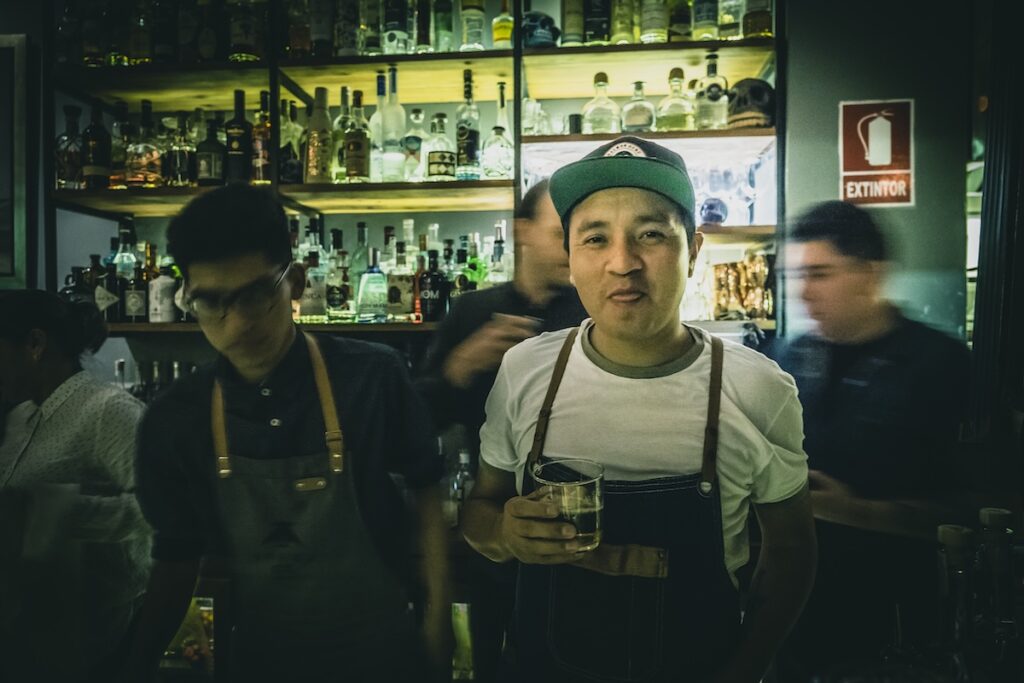Originally from Chimbote, a city in northern Peru, Louis Flores has been living in the capital, Lima, for seventeen years. With a career that spans some of Peru’s most renowned restaurants, including Maido, Malabar, and ámaZ, he now manages La Pulpería, a venue specializing in wine and local artisanal products. In this interview, Louis shares his insights into Peru’s vibrant yet often underappreciated bar scene, which remains a hidden gem for many cocktail enthusiasts around the world.
What’s your bartending philosophy?
I aim to uncover the true value in the ingredients I work with. I want guests to appreciate these ingredients through delicious cocktails.

Do you incorporate any cultural heritage from the Incas into your work at the bar or restaurant?
I try to employ some old techniques from Incan heritage and other ancient cultures, notably fermentation. Early in my career, I tried to reintroduce guests to old drinks like “chicha de jora,” a type of fermented corn beverage. The Incas, especially in coastal and mountainous regions, consumed it. I also prepared “masato,” a drink fermented from manioc root. It’s still popular in the jungles. These are two historically and culturally significant Peruvian drinks, slowly fading away. So, it’s crucial to keep them alive.
What are the most commonly consumed drinks in Peru?
Beer is prevalent, varying by location. Pisco is also popular, particularly in Lima and Ica, the main producer of Pisco in Peru. Along the northern coast, “chicha de jora” is preferred, while in the jungle, “masato” is a hit. Foreigners primarily perceive our country through Lima’s trends, assuming they represent Peru. However, different regions have their favorite drinks that might not be mainstream but are immensely popular locally.
What are the current bar trends in Peru and South America?
We’re leveraging our advantage of fresh local produce and beverages in South America. But of course, we’re also keeping an eye on major trends in Asia and Europe, merging them with our own.
Describe the bar scene in Peru.
The bar scene is relatively young, but it’s benefiting from the gastronomic boom that started around 2000. This growth extends to bars, especially in Lima, where you can find several decent ones. However, there aren’t too many, and often, existing ones are closely tied to restaurants.
How is Peruvian hospitality unique?
Our distinct hospitality lies in our nature. We have a warm “Latino vibe.” We tend to connect with strangers more openly, forming somewhat different personal relationships compared to Europe






